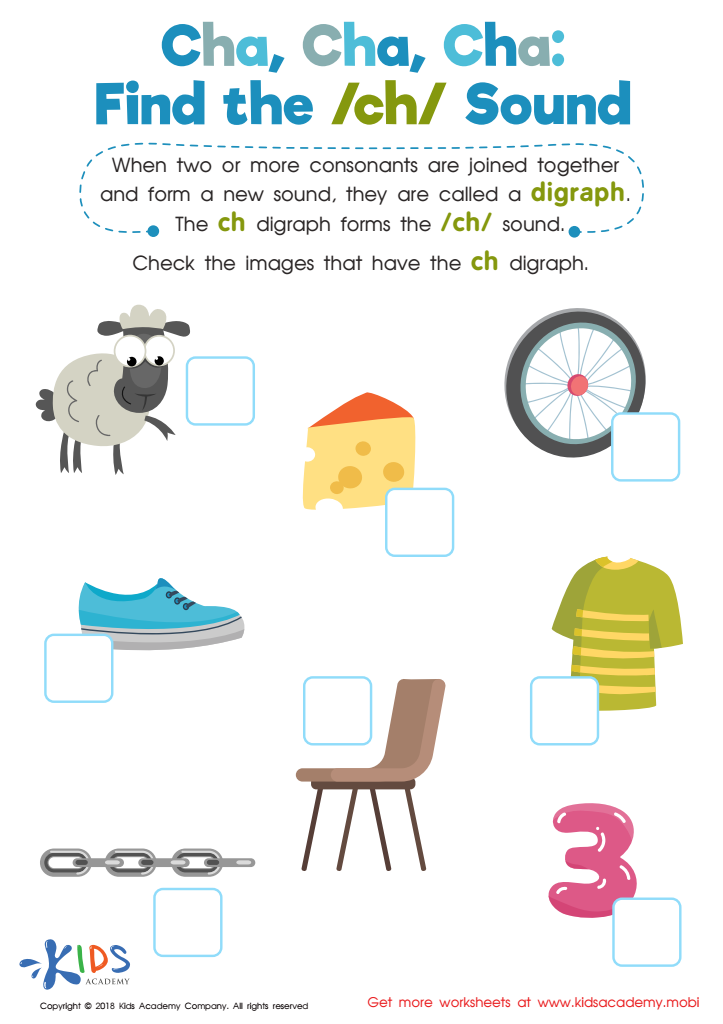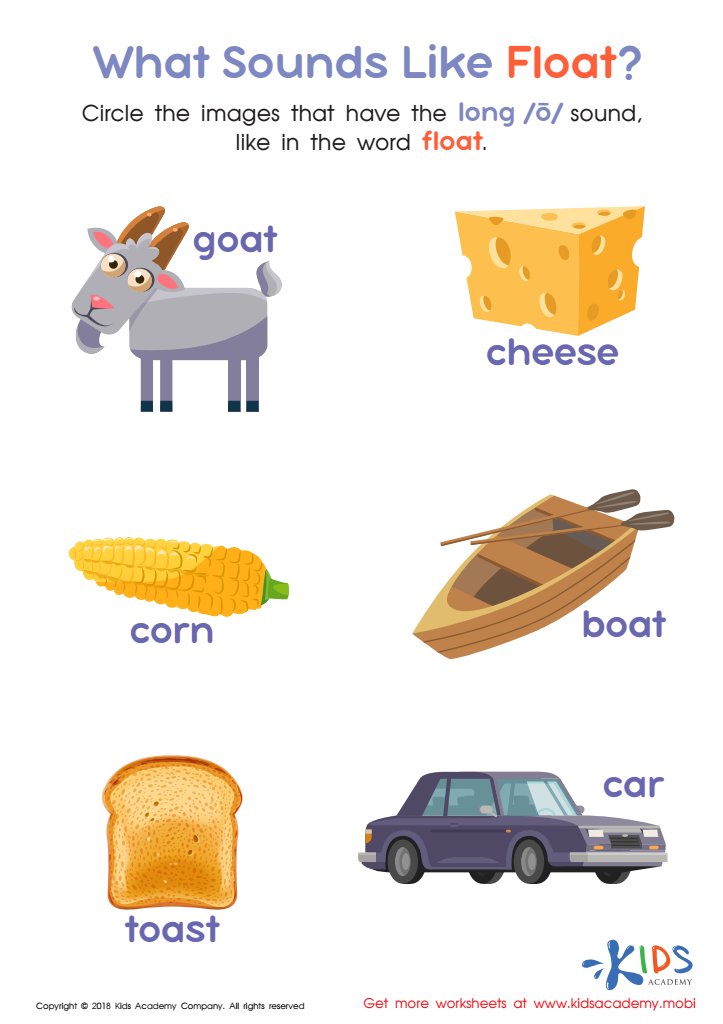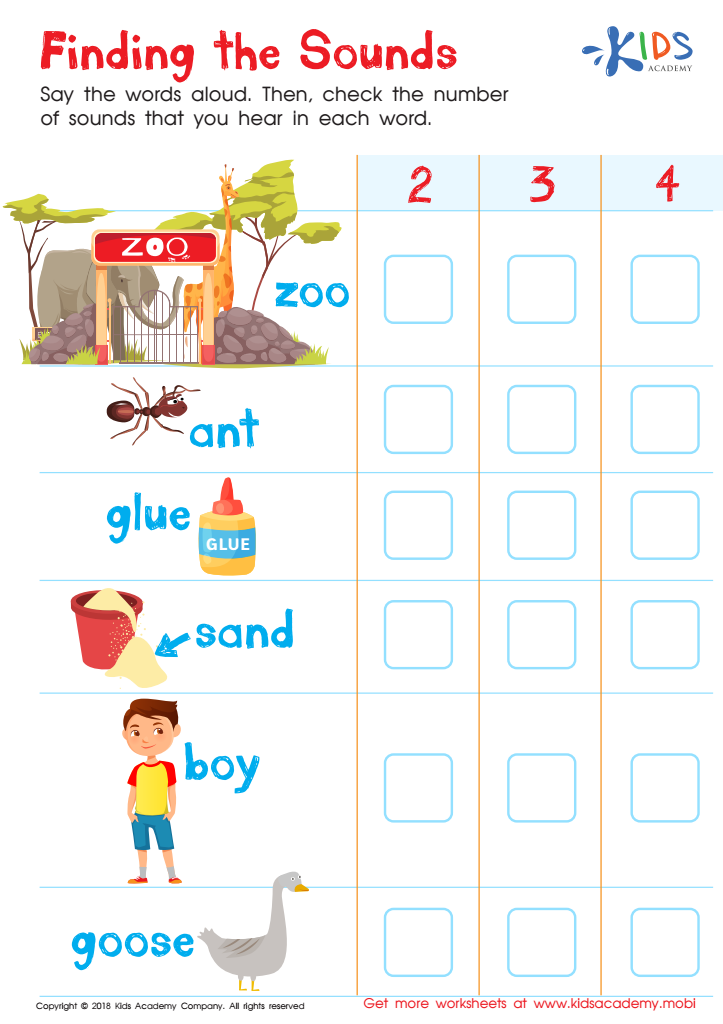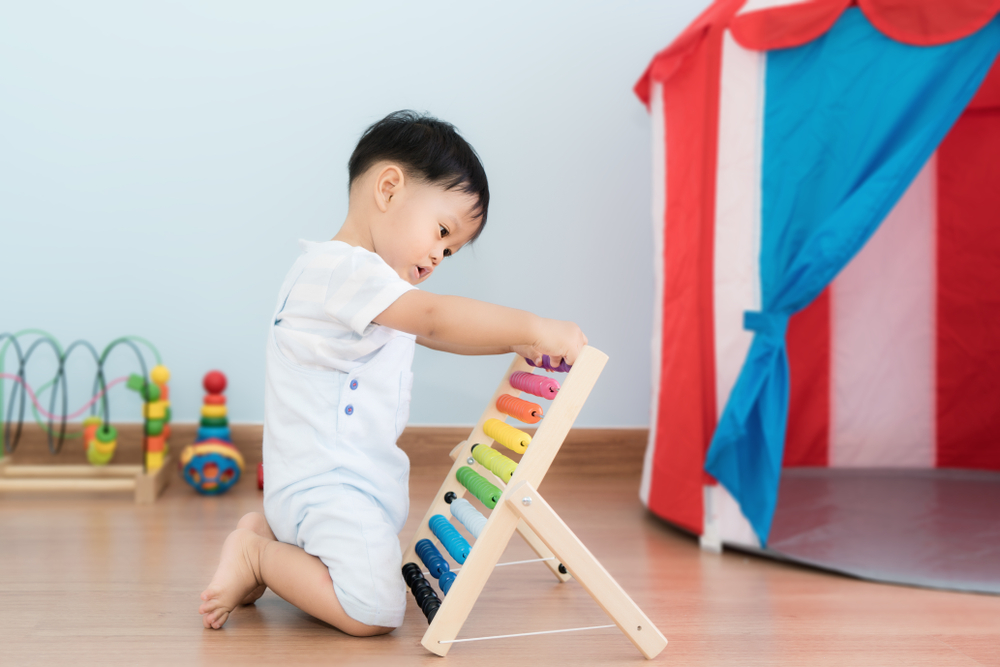Letter-sound recognition Normal Worksheets for Ages 6-7
3 filtered results
-
From - To
Enhance your child's literacy skills with our Letter-Sound Recognition Normal Worksheets, designed specifically for ages 6-7. At this critical learning stage, these engaging and interactive worksheets help children connect letters to their corresponding sounds, strengthening foundational reading skills. Perfect for early learners, our printable worksheets include various fun activities, such as matching letters to pictures, sound identification exercises, and phonics practice. These worksheets not only build strong reading abilities but also boost confidence and enthusiasm for learning. Explore the Kid's Academy collection to give young readers the tools they need for successful development.


Cha, Cha, Cha: Find the /Ch/ Sound Worksheet


What Sounds Like Float? Worksheet


Finding the Sounds Worksheet
Letter-sound recognition is a fundamental skill for children aged 6-7 years, and parents and teachers should give it due importance because it is a key building block for reading and writing proficiency. This skill forms the foundation for phonemic awareness, an essential aspect of literacy that allows children to understand that words are made up of combinations of individual sounds. Without strong letter-sound recognition, children can struggle to decode words, which is crucial for reading fluency and comprehension.
When children can easily match letters to their corresponding sounds, they can begin to decode new words independently, building their vocabulary and improving their confidence in literacy tasks. Furthermore, letter-sound recognition is closely linked to spelling skills. As children associate letters with sounds, they can spell both familiar and novel words more accurately.
For parents and teachers, emphasizing letter-sound recognition aligns with educational standards and developmental milestones. It allows for early identification of potential reading difficulties, enabling timely intervention, and fostering a love for reading. This creates a positive learning experience, encouraging lifelong learning.
In short, investing time and effort in teaching and reinforcing letter-sound recognition at this critical age can significantly impact a child's academic success and provide a strong literacy foundation.

 Assign to My Students
Assign to My Students




















